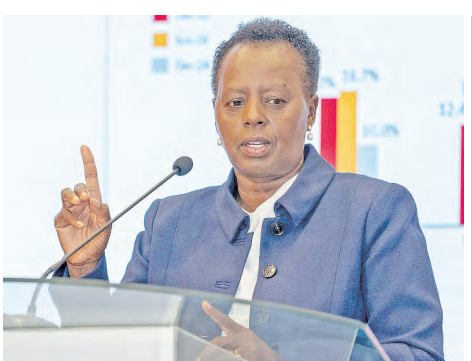
A couple of weeks ago James Ngari went out for an evening catch-up session with friends at one of the famous entertainment joints in Nairobi’s Kilimani area.
All went well until late in the night when everyone nearly blacked out and had to depart home. The following morning, Ngari and his friends were facing a severe headache.
“We only came to learn later that the drink might have been a counterfeit, exposing just how unregulated and illicit drinks have penetrated some of the alcohol delivery value chains,’’ Ngari said.
The story is similar to that of Tabitha Odhiambo, who said that after visiting an entertainment joint in Kitengela, she realized that the drink brought to her was too light to be the one she uses every other day.
Upon inquiry, she was asked whether she wanted the expensive one or the cheaper version of the drink.
Kenya’s alcohol industry, despite being a significant contributor to the country’s economy, is struggling with the infiltration of illicit alcohol into the mainstream market.
From counterfeit brands to unregulated brews, the proliferation of illicit alcohol is not only undermining legitimate businesses but also posing serious health risks to consumers and eroding government revenue.
East Africa Breweries managing director Jane Karuku hinted to The Star that the informal nature of half of Kenya’s alcohol market has made it difficult to standardize across the board.
“So in Kenya, there is a formal alcohol and the informal alcohol market. The formal is less than 50 per cent. We are playing in the 50 per cent formal,” said Karuku.
“Our problem is people drinking things that are not regulated, what we call the illicit. You know, the things that are from down by the river that have got no quality control. That’s a challenge rather than the counterfeit.”
Despite milestones by the government in fighting the vice, illicit alcohol, often referred to as second-generation” alcohol, has become increasingly prevalent in Kenya’s mainstream market.
For instance, more than 2.8 million litres of illicit and counterfeit liquor have been seized by the Ministry of Interior and National Administration in the last six months alone.
According to Karuku, these products are typically sold at lower prices, making them attractive to consumers, especially in low-income areas.
“I think illicit affects the low-end consumers most because there is a pricing issue. And I think even where it is sold. Because if you think about a bar in Westlands or town, it’s not likely to be selling that,” added the MD.
“I think the issue is, the biggest issue in Kenya is the informal, which sometimes is called illicit. Which is not controlled by anybody.”
While authorities have been training their eyes on cheaper brands, fraudsters are throwing them off track by going for expensive and luxurious drinks.
The situation is further exacerbated by the fact that illicit alcohol is often sold alongside legitimate products in bars, supermarkets and even licensed liquor stores.
This makes it difficult for consumers to distinguish between genuine and counterfeit brands, eroding trust in the entire industry.
According to a recent report by the Kenya Association of Manufacturers (KAM), the illicit alcohol trade accounts for approximately 65 per cent of the total alcohol market in Kenya.
This translates to billions of shillings in lost revenue for legitimate manufacturers and the government. The Kenya Revenue Authority (KRA) estimates that the country loses over Sh30 billion annually due to tax evasion linked to illicit alcohol.
A study conducted last year by Euromonitor International, which collects data on markets globally, said about 59 per cent of alcoholic beverages sold locally are illicit.
The study pointed out that the government is losing more than Sh71 billion in revenue annually to illicit alcoholic drinks.
This essentially means that for every 10 bottles of beer that a customer buys, there is a likelihood that six of them are counterfeits.
The Alcohol and Beverages Association of Kenya said the value of the illicit alcoholic products being consumed in the country continues to rise, with younger Kenyans more exposed now.
At least one in every group of eight Kenyans aged 15–65 years is using alcohol, a new report has revealed.
According to the National Survey on the Status of Drugs and Substance Use in Kenya report, 12 percent of Kenyans about 15 years’ old drank alcohol.
This translates to 3,199,119 people. The five-year survey was conducted on a sample of 3,314 people aged 15-65. The survey is used as an evaluation tool to assess the effectiveness of drugs and substance use demand and supply reduction programs implemented in the last five years.
From the report, 20 percent of males aged 15 – 65 years ( 2,511,763 ) while five percent of females in the same age bracket ( 687,356 ) were using alcohol.
Overall, the Western region had the highest prevalence of use of alcohol ( 23.8 percent) followed by Coast ( 13.9 percent) and Central ( 12.8per percent).
The western region had the highest prevalence of current use of
chang’aa ( 11.4 percent), followed
by Nyanza ( 6.3 percent) and Rift
Valley ( 3.6 percent).












